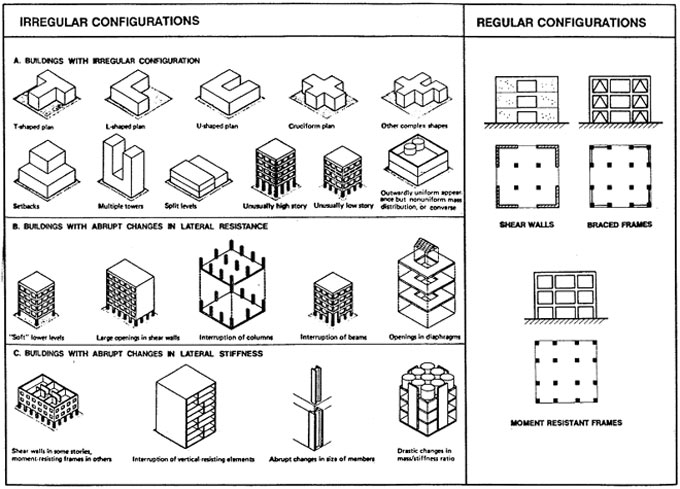
Brief overview of Seismic Design

The mass of the building to be designed manages seismic design apart from the building stiffness, since earthquake produces inertia forces which are proportional to the building mass.
If the buildings are designed to function elastically throughout earthquakes devoid of any damage, the project becomes economically illogical.
Because of this, it is essential for the structure to endure damage and thus disperse the energy input to it throughout the earthquake. So, the conventional earthquake-resistant design philosophy needs that normal buildings should have the capacity to withstand earthquake.
Minor (and regular) shaking with no damage to structural and non-structural elements.
Moderate shaking with small damage to structural components, and some damage to non-structural elements.
Extreme (and unusual) shaking with damage to structural components, but with NO collapse (to save life and property inside/adjacent to the building.
SEISMIC DESIGN FACTORS: The following factors provide a great impact on the building design. Serious attentions should be given in the design phase.
Torsion: Objects and buildings contain a center of mass i.e. a point by which the object (building) is balanced devoid of rotation taking place. If the mass allotted consistently then the geometric center of the floor and the center of mass may meet.
If the mass is allotted unequally, the center of mass is placed outside of the geometric center and it leads to "torsion" producing stress concentrations. A specific amount of torsion is indispensable in each building design. If the masses are organized uniformly, it will lead to balanced stiffness against either direction and maintain torsion within a agreeable range.
Damping: Usually, the buildings are poor resonators to dynamic shock and disperse vibration by engrossing it. The natural vibration is consumed with damping.
Ductility: Ductility is the property of a material (like steel) to bend, flex, or move, but fails due to happening of significant deformation. Non-ductile materials (like weakly reinforced concrete) fail unexpectedly by crumbling. It is possible to attain superior ductility with carefully detailed joints.
Strength and Stiffness: Strength is a property of a material to defy and tolerate applied forces within a safe limit. Stiffness of a material refers to a degree of resistance to deflection or drift (drift being a horizontal story-to-story relative displacement).
Building Configuration: This term defines a building's size and shape, and structural and nonstructural components. Building configuration establishes the way seismic forces are circulated within the structure, their relative magnitude, and problematic design concerns.


